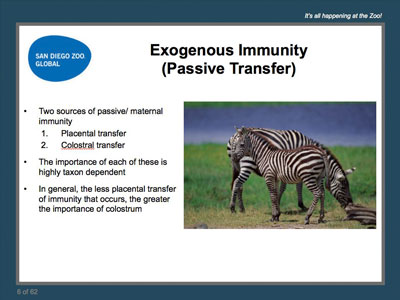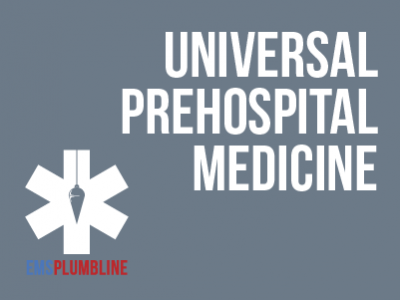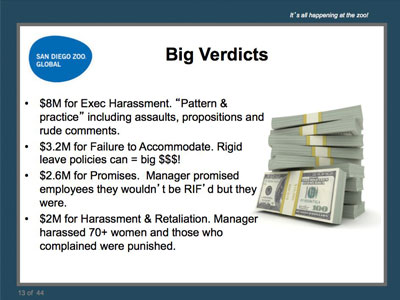 |
Hand Rearing Avian Neonates |
1.00 |
This webinar will be devoted to outlining general guidelines for hand rearing avian neonates. While some avian taxa have specialized needs, requiring specific techniques, procedure and protocols, there are many things that all avian neonates have in common. An overview of those needs and the criteria involved in creating and implementing these protocols will be highlighted. |
 |
Neonatal Ungulates |
1.00 |
This Webinar will be devoted to outlining general guidelines and special considerations for hand rearing hoofed stock. Neonatal hoofstock present us with special challenges when they are orphaned or neglected at birth. Caring for them requires specific husbandry procedures and protocols. An overview of the unique immune system and method of immune transfer in these animals along with protocols for managing colostrum deprived individuals will be highlighted. |
 |
Light-Footed Clapper Rails: A Successful Ex-Situ Conservation Program |
1.00 |
This webinar provides a detailed overview of the collaborative efforts of different organizations to save this highly endangered bird species. It will enable participants to understand the process involved in setting up a captive breeding and release program for a very elusive bird. |
 |
OSTPD - Promoting Positive Youth Development |
1.00 |
This training will define Positive Youth Development, benefits of Positive Youth Development and how to implement Positive Youth Development. |
 |
OSTPD - Supporting Attendance through After School Programming |
1.00 |
This training will cover a number of areas regarding how after school programs can support youth attendance in school. By looking at and exploring the connection between after school programming and attendance in school, we see how after school programming supports attendance at school as well as how to coordinate with the school in order to maximize the positive impact of after school on school attendance through collaboration. |
 |
OSTPD - Supporting Alternative Pathways through Service Learning |
1.00 |
This training will cover a number of areas regarding how after school programs can support alternative pathways by using service learning. The course will review what service learning is and provide a solid foundation of this concept. It will then look at the benefits of service learning followed by how service learning supports youth’s alternative pathways. It will conclude with information on how to get started and creating a path to implement service learning in your own program.
|
 |
Communicating with the Deaf Sign Language User |
1.00 |
This training was developed by Dr. Jason Rotoli, Deaf Health Pathways Director, University of Rochester School of Medicine and Dentistry in conjunction with Dr. Jeremy Cushman, Chief of the University of Rochester’s Division of Prehospital Medicine. Funding for the Care of the Culturally Deaf education was provided by Society of Academic Emergency Medicine. Continuing Education provided by EMSPlumbline
Final Exam: This multiple-choice exam is designed to test your knowledge of the material you just reviewed. You have three attempts to gain an 80% or higher on this exam. Please take your time and answer each question carefully. |
 |
PPE Care and Maintenance #1931 (Instructor Guide) |
1.00 |
This training session is a PowerPoint presentation and skill demonstration. The presentation is an instructor lead discussion that reviews the importance of proper use and care of personal protective equipment for structural firefighting. The lesson reviews NFPA standards for structural firefighting PPE; 1971 and 1851. The lesson discusses the importance of proper care of the gear including selection, inspection, and storage. The procedure for inspection and cleaning of the PPE is reviewed including washing, drying, and repairing. The inspection procedure is demonstrated by the instructor and performed by the student. The student is able to describe how to conduct routine maintenance and care of PPE by the end of the lesson. |
 |
Customer Service: Listening and Questioning |
0.75 |
This topic will discuss the various types of listening: passive, selective, and active. You will learn that paraphrasing or summarizing what the customer says is a good way to confirm what you hear. In this course, you will also learn about questioning and the types of questions that are used to elicit the information you want from customers. There are four types of questions: open-ended, closed, alternative-choice, and clarifying. This course will also discuss the examination process that can be used to understand the customer’s problem and prescribe a realistic solution. |
 |
Labor Law Round Up |
1.00 |
This session will give you the latest employment law developments and answers to tough employment law questions, presented in a high energy, interactive session. You don't want to miss this one... |











